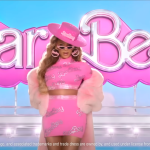
Fashion is a form of self-expression that has the power to transform individuals and captivate the world. It is a dynamic industry that constantly evolves, reflecting the ever-changing tastes and preferences of society. From the runway to the streets, fashion has the ability to inspire, empower, and create a sense of identity. In this article, we will delve into the magic of fashion, exploring its historical significance, its influence on culture, and its role in shaping personal style.
The Historical Significance of Fashion
Fashion has a rich history that dates back centuries. Throughout different eras, clothing has not only served as a means of protection and modesty but also as a symbol of social status and cultural identity. From the intricate garments of ancient civilizations to the extravagant costumes of royalty, fashion has always played a significant role in human society.
During the Renaissance period, fashion became a powerful tool for self-expression and individuality. The emergence of tailoring techniques allowed for more fitted and personalized garments, enabling people to showcase their unique style. This marked a turning point in the history of fashion, as it shifted from being solely functional to becoming a form of artistic expression.
The Influence of Fashion on Culture
Fashion has always been closely intertwined with culture, reflecting the values, beliefs, and traditions of a society. It serves as a visual language that communicates messages about identity, social class, and even political ideologies. Fashion trends often emerge as a response to societal changes, making it an important barometer of cultural shifts.
For example, in the 1920s, the flapper style emerged as a rebellion against traditional gender roles and societal norms. The short skirts, bobbed hair, and bold makeup choices of flappers represented a newfound sense of freedom and independence for women. Similarly, the punk movement of the 1970s was a direct response to the political and economic climate of the time, with its unconventional and rebellious fashion choices serving as a form of protest.
Personal Style: A Reflection of Self
Fashion is not just about following trends; it is about creating a personal style that reflects one’s individuality. Personal style is a powerful tool that allows individuals to express their personality, values, and aspirations. It is a way to communicate without words, making a lasting impression on others.
Finding one’s personal style can be a journey of self-discovery. It involves experimenting with different silhouettes, colors, and textures to find what resonates with one’s inner self. Whether it’s a minimalist approach or a maximalist extravaganza, personal style is an ever-evolving expression of who we are.
The Magic of Fashion: Empowerment and Confidence
Fashion has the power to transform not only how we look but also how we feel. The right outfit can boost confidence, empower individuals, and even change their mindset. It is no wonder that fashion is often referred to as “wearable art” – it has the ability to evoke emotions and create a sense of magic.
When we put on a well-fitted suit or a beautiful dress, we feel a sense of empowerment and self-assurance. The right outfit can make us stand taller, walk with purpose, and exude confidence. Fashion has the power to shape our perception of ourselves and how others perceive us, making it a truly magical force.
Conclusion
Fashion is more than just clothes; it is a form of art that has the ability to inspire, empower, and transform. From its historical significance to its influence on culture and personal style, fashion plays a vital role in our lives. It allows us to express our individuality, communicate our values, and embrace our uniqueness. So next time you put on your favorite outfit, remember the magic that fashion holds and the impact it can have on both yourself and the world around you.





